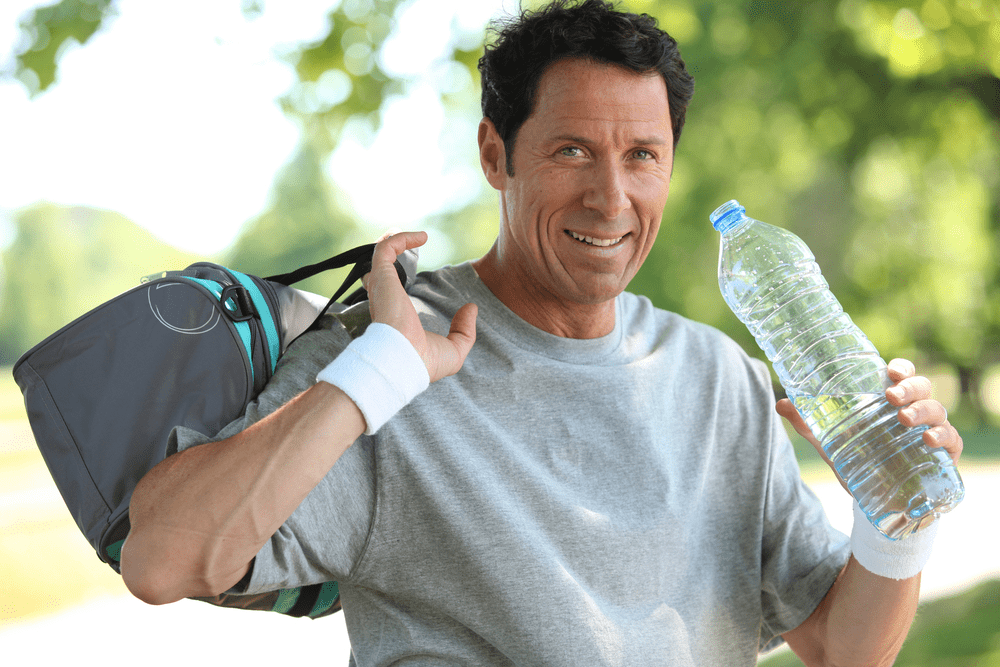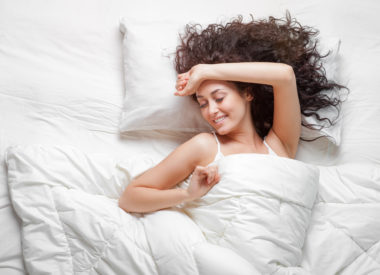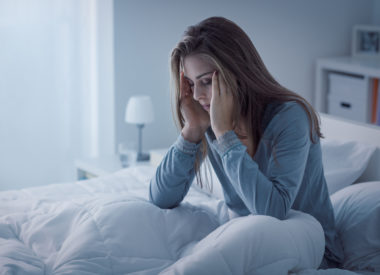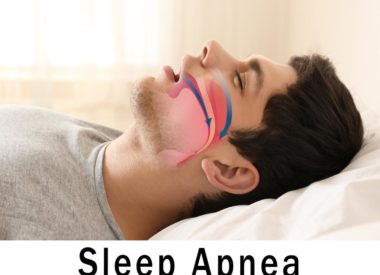How to exercise your way to sleep apnea relief
What we don’t always think about is how having sleep apnea may impair us during the day, when we’re awake .
A common side effect of sleep apnea is excessive daytime sleepiness (EDS), which may be the most commonly understood adverse effect of having this sleep-breathing disorder.
However, poor breathing during sleep can also lead to poor breathing during exercise during the day.
How sleep apnea affects your breathing when you’re awake
A study published in the Journal of Clinical Sleep Medicine in 2014 confirmed another daytime byproduct of poor breathing during sleep: impairments to one’s capacity to exercise.
Some key observations from this study:
-
Subjects with OSA showed less capacity to exercise
-
The higher a subject’s apnea-hypopnea index (AHI) score, the greater the decrease in their exercise capacity
-
Muscle energy metabolism in subjects with sleep apnea was shown to be impaired during exercise
-
Skeletal muscle fibers in those with OSA show distinctive changes in structure when compared to those in subjects without OSA
-
Microvascularization in skeletal muscles (in which the muscular system “grows” new small blood vessels, often to compensate for the dysfunction of the larger ones)increases in people with higher AHI in a way that reflects chronic hypoxia (or long-term reduced blood oxygen levels)
Study subjects with sleep apnea showed abnormal cardiovascular responses during exercise or its recovery, such as:
-
High blood pressure (diastolic)
-
Reductions in blood pumped from the left side of the heart to the right
-
Weakened pulse during peak exercise and while in recovery from exercise
-
The noteworthy dysfunction of the heart chambers, especially the left one, due to chronichypoxia
Another study in 2013, published by the American Journal of Cardiology, showed “an independent and highly significant association between SDB [sleep-disordered breathing]severity and reduced exercise capacity, as well as …increased exercise-related ventricular arrhythmias. We have also found that, compared with patients without SDB (AHI <5), those with severe SDB (AHI 30) have significantly reduced functional aerobic capacity” independent of factors like heart disease and obesity.
What is functional aerobic capacity?
Functional aerobic capacity (FAC) measures the highest amount of oxygen the body consumes during peak exercise using large muscles. It gives us an idea of how efficiently our heart and lungs work together to process this increased intake of oxygen as we engage in exercise.
As expected, an extremely fit person enjoys the ability to breathe easily even during the most strenuous aerobic exercise. They have high FAC.
However, someone who is less fit (such as someone who has sleep apnea or who has a higher body-mass index, or BMI) may struggle to breathe well. Other problems may occur during strenuous activities, such as changes in heart rhythms, lung function, or metabolism.These factors reveal a lower FAC among people in this category.
A common way to measure FAC is to undergo pulmonary or cardiac function testing, which measures many different heart and lung functions during different levels of physical activity.
Exercise: the perfect companion to weight loss for treating sleep apnea
A 2014 meta-analysis published in Lung revealed”a statistically significant effect of exercise in reducing the severity of sleep apnea in patients with OSA with minimal changes in body weight.”
What the study suggests is this: even if you exercise but don’t lose weight, take heart the act of exercising itself can still lead to successful management of your sleep apnea. Not only might you improve your overall fitness level, but you could reduce the wearing effects of excessive daytime sleepiness caused by OSA, potentially reduce your AHI, and improve your overall sleep quality and efficiency.
Research published in Respiratory Medicine in spring 2016 confirms these findings and suggests that, independent of weight loss , exercise as the sole intervention for treating OSA can markedly reduce AHI scores.
Want sleep apnea relief? Want to sleep better? It may be as simple as walking a mile a day.
Don’t forget the positive influence of exercise on weight loss
Much emphasis has been made on weight reduction as a proactive therapeutic component for nearly every chronic disease, and for good reason.
Americans are more overweight and obese than ever, and many of our medical conditions are linked to unhealthy weight.
Diets to restrict calories or intake of fat or carbs can be part of one’s approach to treating OSA if your BMI indicates you need to lose some weight. However you approach this is a discussion best held with your physician, nutritionist, or dietitian.
Choosing dietary approaches for weight loss is a solid option, but it can be even more effective if you add more exercise to your daily activities.
Getting more exercise is something doctors always encourage, but making the “more exercise” prescription a reality can be just as difficult as sticking to a diet.
You may wonder, How much exercise? What kind? How frequently? Again, this is a discussion between you and your healthcare team.
However, in light of the way sleep apnea can challenge the body even during wakefulness, it’s recommended that aerobics be a regular feature of your exercise regimen, even if you don’t need to be concerned with losing weight.
Aerobic activities should be done at the level you are best able to perform them.Anything from flow yoga to running to swimming to playing recreational sports to rope skipping to step classes to walking to the mailbox and back can count as aerobic activity as long as it is sustained activity that keeps the heart rate elevated.
How to sleep better with regular aerobic exercise… even when you don’t have sleep apnea
Daily exercise is good for all people, regardless of their particular health status. Exercise:
-
Improves sleep efficiency the ease in which you can fall asleep and stay asleep at night
-
Encourages deep sleep (stage 3 sleep ), which is critical to overall health and well being
-
Leads to feeling more rested when you wake up in the morning
-
Enhances positive mood and memory function
At Sound Sleep Health, we work in concert with Sound Medical Weight Loss to help those struggling with the sleep-weight connection. Healthy sleep, diet, and exercise are key to overall good health.
If you are challenged to lose those unwanted pounds, you may wish to consider working with a knowledgeable, trained physician who can help you implement realistic fitness goals, follow a healthy diet, achieve better sleep, and reclaim your wellness in a safe, healthy way.
Sources:
American Journal of Cardiology
Journal of Clinical Sleep Medicine
Lung
Mayo Clinic
National Sleep Foundation
Respiratory Medicine



